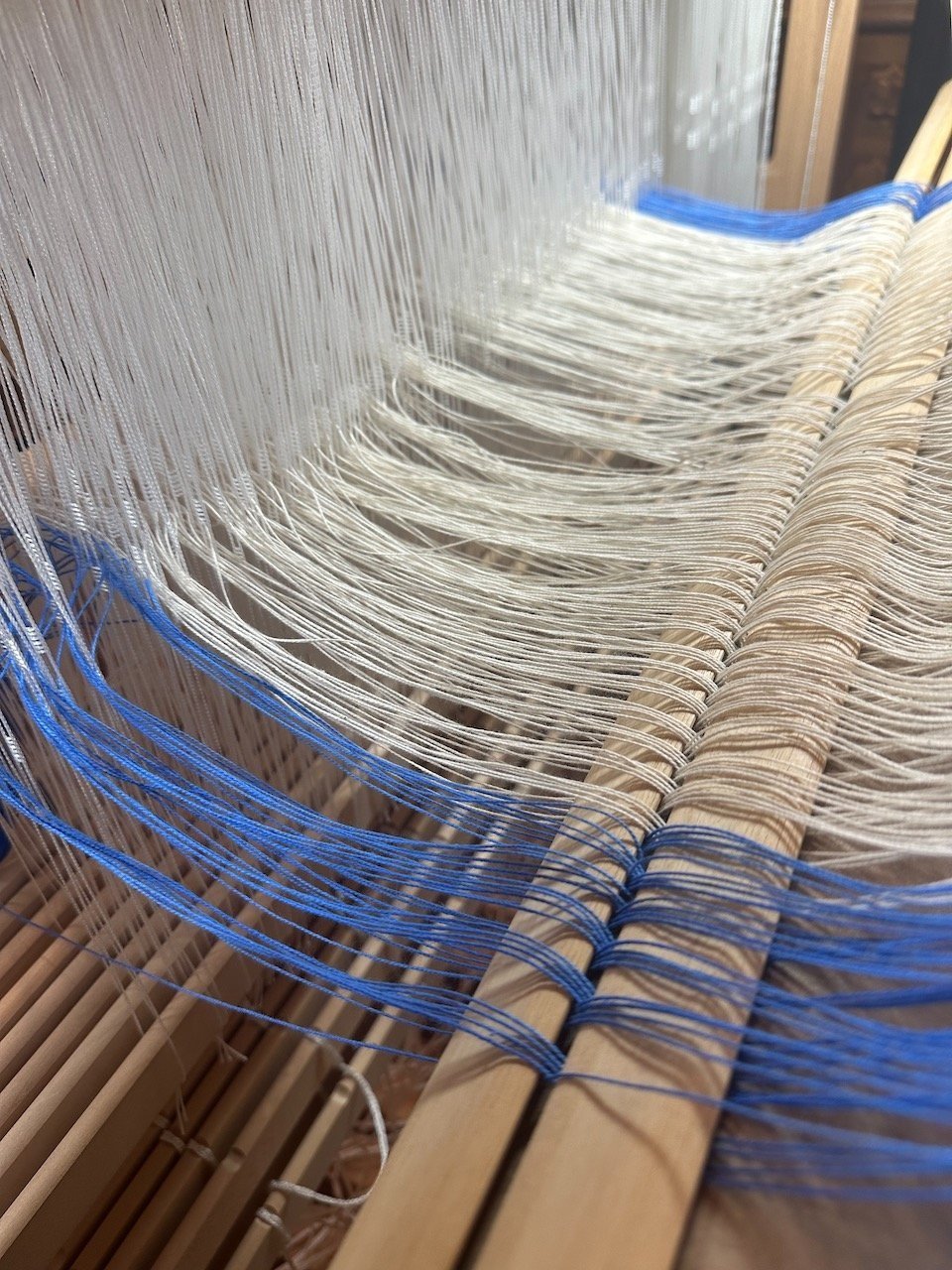
weaving
from dream to reality
It all starts with
idea
Will the cotton or linen threads be woven together to decorate and protect a dining table, or to become napkins, or a towel? Should soft lambswool be combined with silk to wrap around the shoulders for a luxurious shawl?
Then there is a world of possibilities -- color combinations, graphics, pattern choices, weave structures. Once these decisions are made the drafting begins.
that turns into
plan
It’s important to get all the math right at this stage. To make the draft for a piece of cloth, calculations are made regarding the thickness of the yarns used, the desired width of the piece, the way the chosen weave structure affects the density of the fabric, where the color changes will happen in the design.
that leads to
preparation
Once the draft is checked and double checked the winding of the warp begins. Here it’s important to count accurately. For instance, one end of yarn too few out of 378 ends can throw the whole pattern off.
Next the warp is chained and wound onto the loom, after which each of the the 378 ends is individually threaded through a heddle on the designated harness, through the reed and finally tied onto the front beam along with the rest of the ends.
Each harness is then tied to its draft-designated treadles so the weaver’s feet can lift and lower harnesses while hands are busy with shuttles.
Lots of detail work!
and now for
technique
Finally the really fun stuff. Throwing the shuttle back and forth across the warp creates the weft of the cloth. Beating the rows of weft in place with just the right amount of pressure creates a nice drape. The rhythm of weaving feels like music. The gradual unfolding of the design feels like painting. And the discipline of weaving requires a perfect balance of concentration and relaxed engagement — a kind of active meditation.
After the piece is woven all the finish work begins. Scarves are hemmed by hand and the fringes are twisted and tied by hand. Table linens and towels are machine hemmed. All the ends are trimmed.
at the finish line
magic
The last step is to wash the piece in water. When the cloth is gently washed, dried and pressed the fibers in the yarns relax and fluff out to become their best selves. The fabric is forever transformed in this process. It really does feel like magic!
Every part of this process fascinates me! While weaving I often feel a connection with the women and men who practiced this art before me. It’s an old craft. Yet it’s kept alive in the hands of those who appreciate it.
Feel the difference ~ wear with pleasure ~ decorate with unique style
Keep the craft alive






